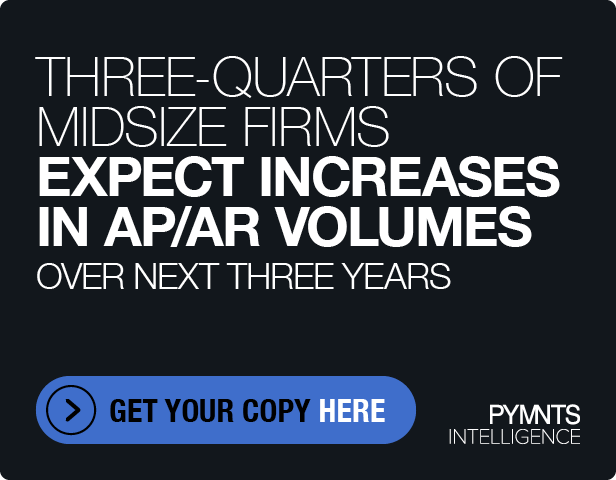Corporate Spend Control On A Macro — And Micro — Level

Source-to-pay service provider Zycus secured a major client earlier this month: AmeriGas. In an announcement, Zycus revealed that it would be providing its Spend Analysis solution to the oil giant, aggregating its data from ERP systems, p-cards and other spending portals into a single view.
For a multinational oil company like AmeriGas, that’s a lot of data and, without proper data aggregation and analysis, a lot of opportunity for noncompliant, wasteful spending.
Zycus VP of Corporate Development Richard Waugh discussed with PYMNTS the specific needs of the oil and gas industry when it comes to handling this data deluge.
According to Waugh, even for a fuel conglomerate as large as AmeriGas, controlling spend from supplier contracts down to individual employee p-cards is crucial. He took us through what oil and gas companies should be focusing on when they decide to take a more strategic approach to their spending.
Waugh noted that corporations in this industry must prioritize making sure they have the right data to analyze in the first place. At the grassroots level, this means an adequate taxonomy structure — the procedure used to categorize a purchase to see where the money went.
[bctt tweet=”Firms must prioritize having the right data to analyze in the first place.”]
Waugh explained that the oil and gas sector can most benefit from a hybrid taxonomy, which uses the typical United Nations Standard Products and Services Code, as well as a more individualized, custom group of categories that are more suitable for the market — things like valves, pumps and the like.
“There is a best practice taxonomy that exists that’s meaningful and really represents the way that companies of the oil and gas space think about and describe the products and services they buy,” he explained.
For the oil and gas sector, said Waugh, the largest challenge in accurate taxonomy is in regards to indirect purchases, the transactions for items and services that don’t go directly into the end product.
The sheer volume and diversity of these types of purchases make it extremely difficult for oil and gas companies to accurately visualize how and where money flows into indirect spending.
“On the back end, you’re buying all of these different, indirect parts and services, and the transactions aren’t coded and classified properly,” Waugh said. “Most organizations don’t have the kind of rigor on the front end to ensure data accuracy. Therefore, spend analytics is most acute on the indirect spend side.”
Only when those purchases are accurately labeled, he added, can companies like AmeriGas truly gain insight into their spend habits.
“For the data to become meaningful, to interpret it and make strategic business decisions, the data first has to be rationalized, normalized and cleansed,” he explained.
[bctt tweet=”For the data to become meaningful, it first has to be rationalized.”]
This process of getting all of a company’s spend data up to code and classified then allows a business to see where the trouble spots might be. According to Waugh, for the oil and gas sector, those trouble spots often occur with supplier transactions.
Noncompliant purchases are a major source of spending friction for companies. For example, an oil company may have just three preferred, approved vendors for a specific category of spend. But once all of the spend data is categorized, management may be able to see that, in fact, purchases have been made with a dozen suppliers, making many of those deals noncompliant.
But there are other ways this data can uncover noncompliance in supplier deals, too.
“Even if you’re using the approved contracted vendor, do you know that, in every case, you’re getting the contracted price for the items you’re purchasing?” Waugh hypothesized. “It’s often very eye-opening to a lot of clients to see that, in some cases, they may be buying the same item from the same vendor and paying vastly different prices for the same items.”
In addition to this price compliance component, the data can also uncover whether contract compliance is an issue. When oil and gas companies work with multiple vendors across locations, payment terms can often become inconsistent — net 30 days here, net 10 days there.
“From a cash flow management standpoint, it makes much more sense to standardize on the contracted 30-day terms,” he stated. “That’s another example of the type of compliance that can be implemented once you have that level of visibility.”
The oil and gas sector is made up of large, multinational conglomerates. They often work with dozens, perhaps even thousands, of vendors, so without proper spend taxonomy and a robust analytics tool, spend can quickly get out of hand.
But Waugh noted that companies like AmeriGas still have to deal with spend control on a micro-level, just like any business, large or small. That means gaining visibility into commercial card and p-card spend, employee expensing habits and the like.
“An employee that has plastic in their hands may have some controls built into the card, especially through dollar spending limits,” he explained. “But essentially, you’ve got carte blanche. And that introduces more opportunity for a maverick purchase with someone other than an approved vendor.”
That’s why it’s key, Waugh added, for oil and gas conglomerates to not only wrangle in their procurement coding and supplier transaction data but also the information from individual employee purchases. That’s when a corporation can strategically act on that data. For example, with this type of information in hand, a corporation can then rationalize its supplier base or create a repository of supplier contracts so buyers can ensure compliance. Otherwise, the executive said, inconsistent, inaccurate data will lead to a “garbage in, garbage out” dynamic.
“If that data on the front end isn’t clean and accurate, then tools like Spend Analytics are a way to normalize, classify, cleanse and enrich that data,” he said. “The data becomes actionable and gives you the kind of insight you need to run your business.”
